Are you thinking about the possibility of growing your very own indoor plants, but still have some doubts? Look no further! In this blog post, we’ll share 7 of the most frequently asked questions about low light plants.
I can’t think of anything more tranquil, more beautiful, more perfect than a garden. – Louisa May Alcott
If you’re looking for some low light plants to brighten up your home, you’ve come to the right place! In this blog post, we’ll be answering some of the most frequently asked questions about low light plants.
You’ll learn about the different types of low light plants, how to care for them, and where to find them. By the end of this post, you’ll be an expert on low light plants!
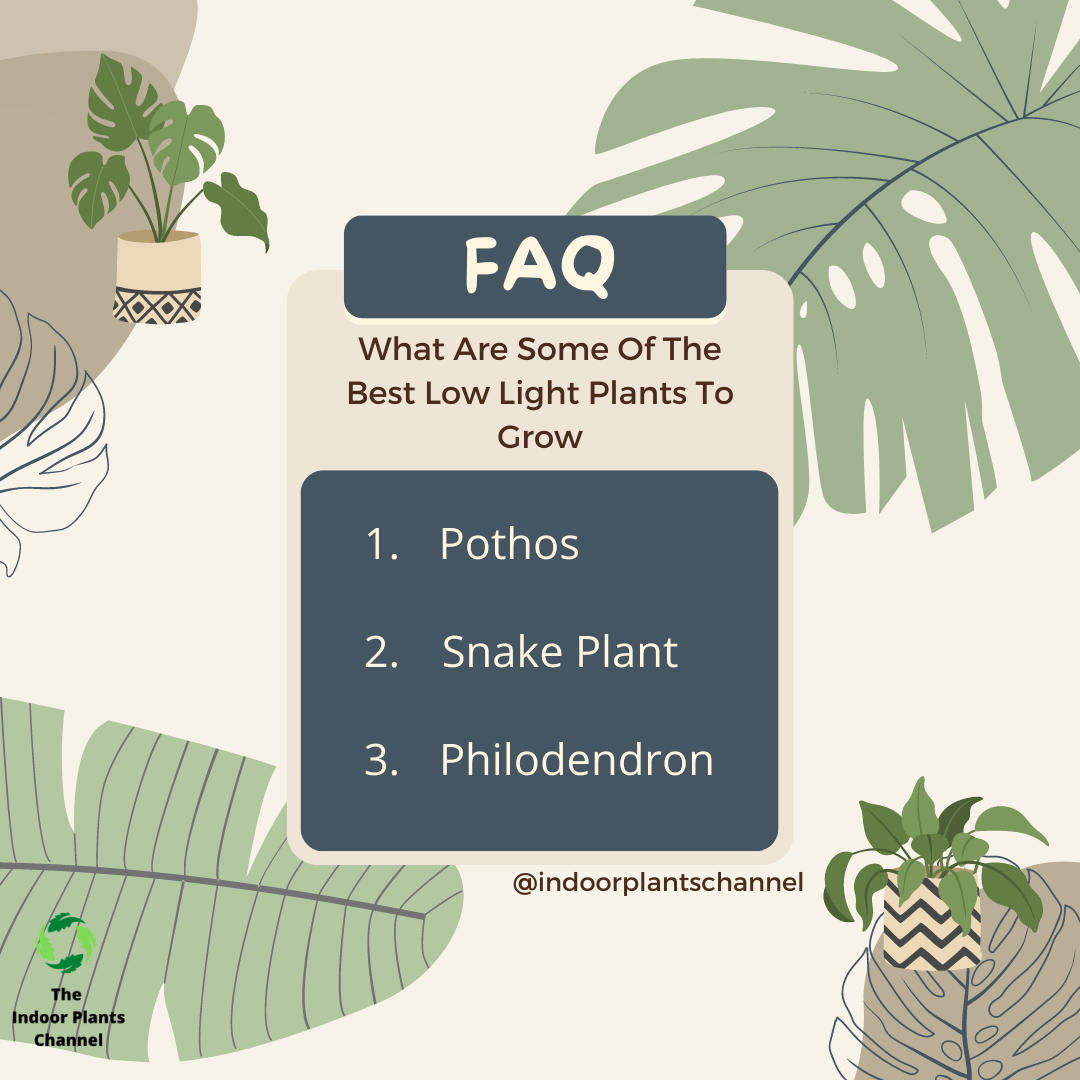
What Are Low Light Plants?
Low light plants are plants that can grow in low light conditions. This means that they can tolerate less light than other plants, and still grow and thrive.
There are a variety of low light plants that you can choose from, depending on your needs and preferences. Some common low light plants include ferns, spider plants, and peace lilies.
These plants are ideal for growing in areas that do not get a lot of sunlight, such as in offices or rooms that have limited natural light.
Low light plants are easy to care for and can add a touch of greenery to any space. If you are looking for a plant that is low maintenance and can thrive in less than ideal conditions, then a low light plant is a great option for you.
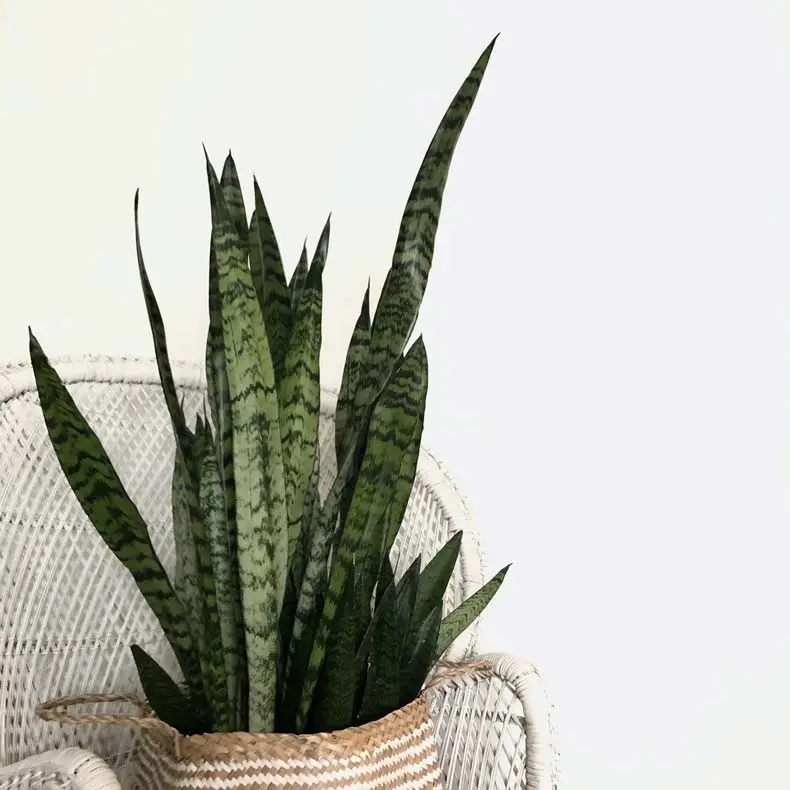
What Are The Benefits Of Growing Low Light Plants?
There are many benefits of growing low light plants. They can help purify the air, increase humidity, and even boost your mood.
Air Purification
One of the benefits of growing low light plants is that they can help purify the air. They do this by absorbing harmful toxins and chemicals from the air. This can help improve your indoor air quality and make it healthier for you to breathe.
Increased Humidity
Another benefit of growing low light plants is that they can help increase humidity. This is especially beneficial during the winter months when the air is dry. By increasing humidity, low light plants can help prevent dry skin, nosebleeds, and static electricity.
Boosts Mood
In addition to purifying the air and increasing humidity, low light plants can also boost your mood. Studies have shown that being around plants can help reduce stress and anxiety. So if you’re feeling down, try adding some low light plants to your home or office.
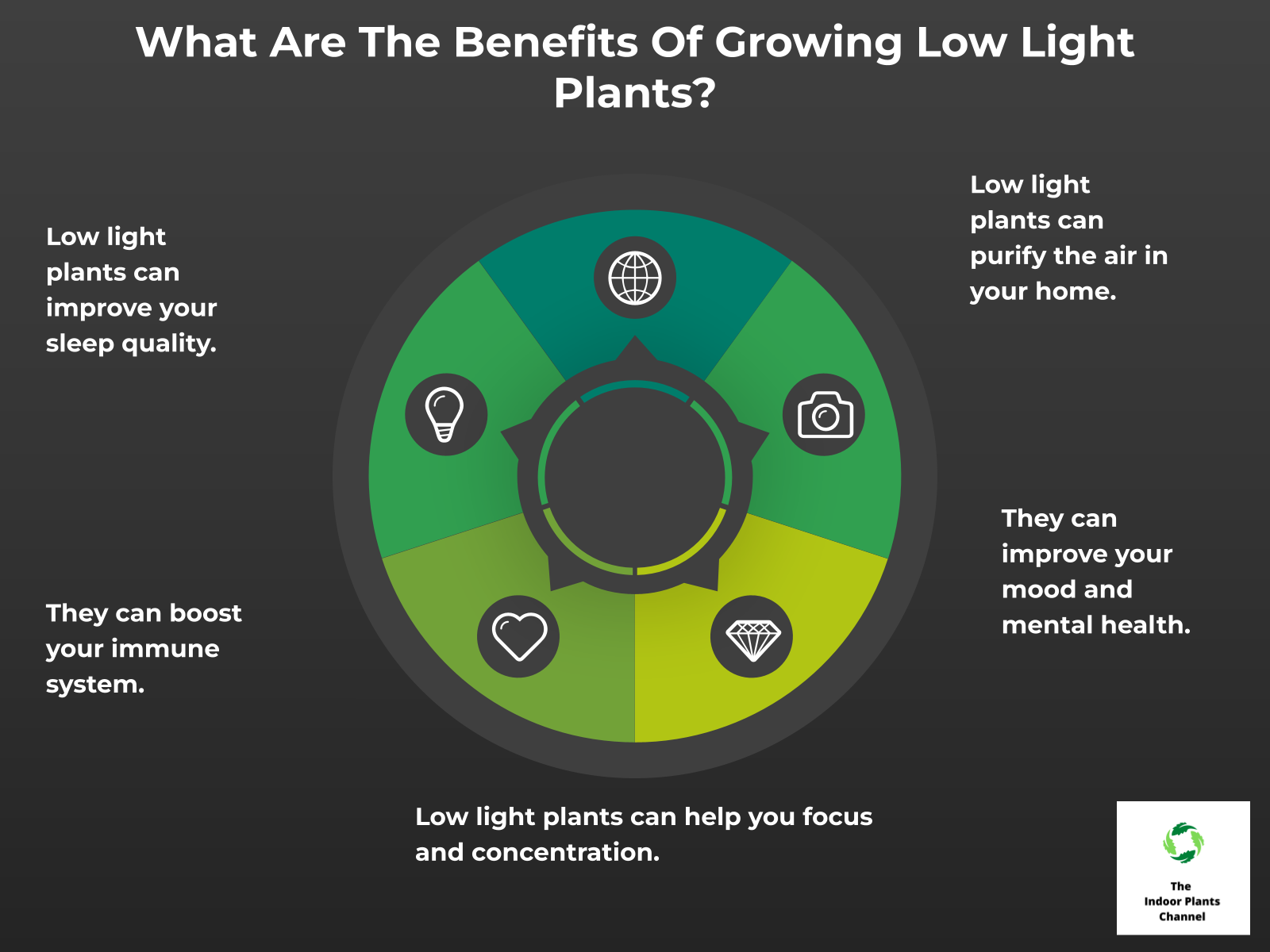
What Are Some Of The Best Low Light Plants To Grow?
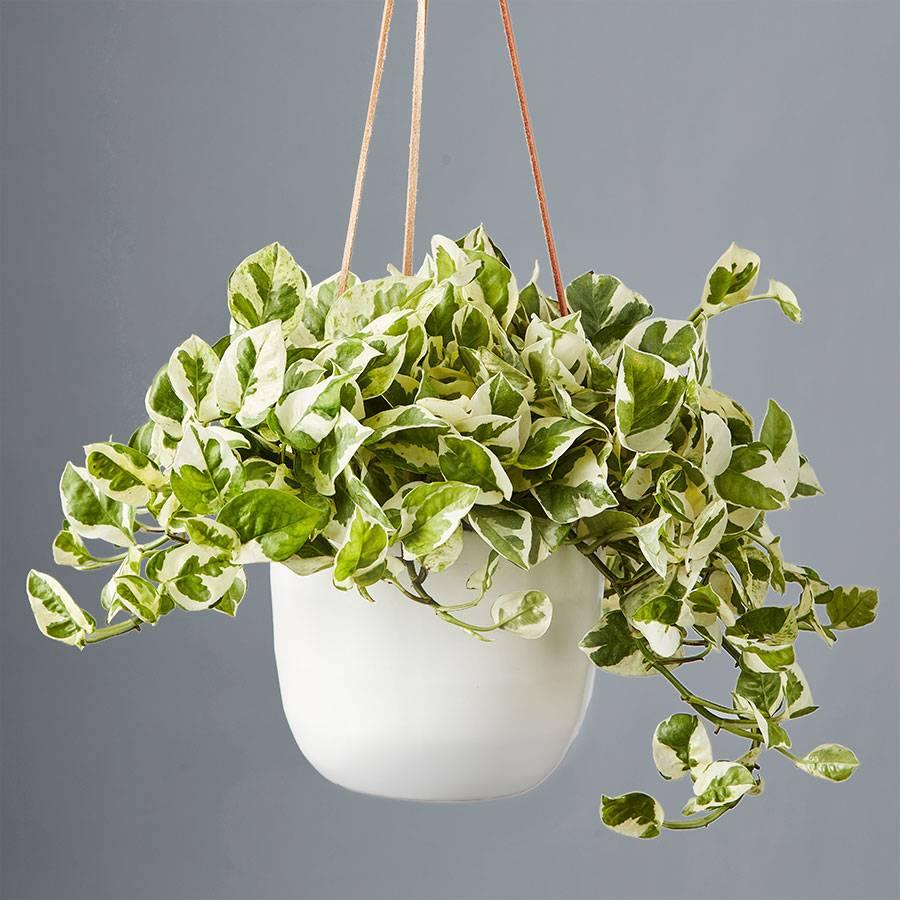
There are a lot of great low light plants that you can grow! Here are some of our favorites:
1. Pothos
Pothos is a great plant for beginners because it is very easy to care for. It can tolerate a wide range of light conditions, making it perfect for low light areas. Pothos is also a great air purifier, so it’s perfect for improving indoor air quality.
2. Snake Plant
Snake plants are another great option for low light areas. They are very tolerant of neglect and can even thrive in areas with no natural light at all. Snake plants are also great air purifiers and can help to improve indoor air quality.
3. Philodendron
Philodendrons are a classic houseplant that is very easy to care for. They are tolerant of a wide range of light conditions, making them perfect for low light areas. Philodendrons are also great air purifiers, so they can help to improve indoor air quality.
4. Spider Plant
Spider plants are another great option for low light areas. They are very easy to care for and can tolerate a wide range of light conditions. Spider plants are also great air purifiers and can help to improve indoor air quality.
5. Peace Lily
Peace lilies are a beautiful plant that can thrive in low light conditions. They are very easy to care for and are great air purifiers. Peace lilies can also help to improve indoor air quality.
6. Chinese Evergreen
Chinese evergreens are a classic houseplant that is very easy to care for. They are tolerant of a wide range of light conditions, making them perfect for low light areas. Chinese evergreens are also great air purifiers and can help to improve indoor air quality.
7. Dracaena
Dracaenas are a great plant for low light areas. They are very tolerant of neglect and can even thrive in areas with no natural light at all. Dracaenas are also great air purifiers and can help to improve indoor air quality.
How Do You Care For Low Light Plants?
Just like any other type of plant, low light plants need water, sunlight, and nutrients to grow. However, because they don’t require as much light as other plants, they can be easier to care for.
To water low light plants, simply give them a good soaking once a week. Allow the soil to dry out in between waterings to prevent root rot.
Sunlight is important for all plants, but low light plants can survive with less sunlight than other plants. If you can give them a few hours of indirect sunlight each day, that’s ideal. But if you can’t, they’ll still be okay as long as they’re getting some light.
Finally, low light plants need nutrients just like any other plant. You can either use a fertilizer made specifically for low light plants, or you can add some compost to their soil. Just be sure not to over-fertilize, as that can harm the plant.
With just a little bit of care, low light plants can thrive in your home.
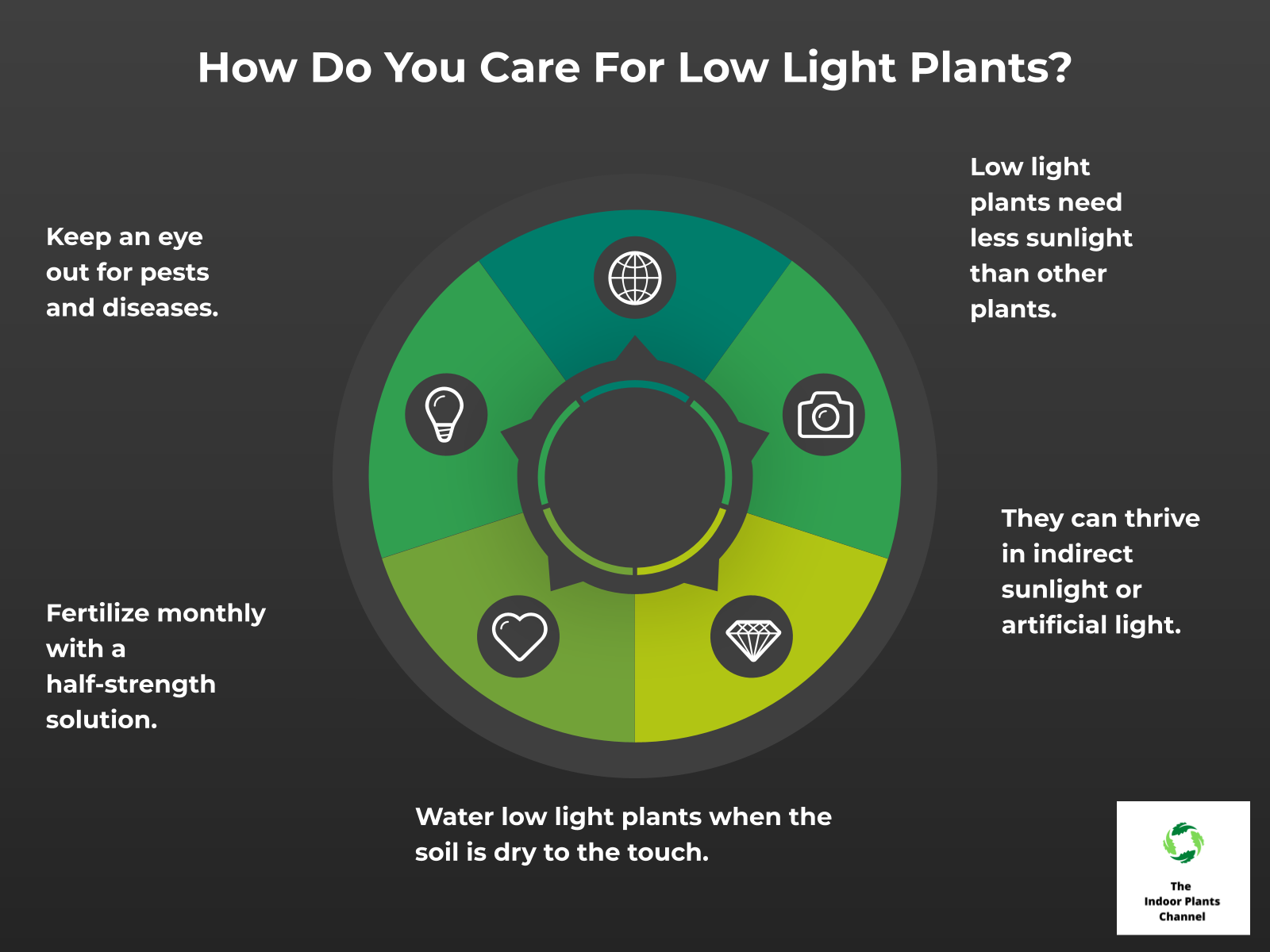
What Are Some Common Problems With Low Light Plants?
Low light plants are susceptible to a number of problems, including leggy growth, etiolation, and slow growth.
Leggy growth is when a plant grows too quickly and becomes lanky. This is often due to too much light.
Etiolation is when a plant grows too slowly and becomes weak. This is often due to too little light.
Slow growth is when a plant grows at a normal rate but takes longer to do so. This is often due to insufficient light.
How Can You Improve The Growing Conditions For Low Light Plants?
To improve the growing conditions for low light plants, you can do the following:
1. Make sure the plant has enough light.
2. Water the plant regularly.
3. Fertilize the plant.
4. Prune the plant.
5. Provide support for the plant.
6. Protect the plant from pests.
7. Monitor the plant for diseases.
What Are Some Tips For Growing Healthy Low Light Plants?
Here are some tips for growing healthy low light plants:
1. Place your plants in an east- or north-facing window.
2. Make sure your plants have plenty of airflow.
3. Keep your plants away from drafts.
4. Water your plants regularly, but do not overwater them.
5. Fertilize your plants every month or so.
6. Prune your plants regularly to encourage new growth.
7. Inspect your plants regularly for pests and diseases.
Conclusion
If you’re still having doubts about taking on the indoor plants endeavor, comb through some more articles on the Indoor Plants Channel for anything and everything a good plant parent needs to know. As for low light plants, after reading this post, you know everything! So get out and start growing your indoor plants.
Michelle Wilde
Related posts
8 Comments
Leave a Reply Cancel reply
![]()
About Michelle Wilde
Michelle Wilde is a stay-at-home mom and avid plant lover. Armed with a post-graduate degree in Computer Science (no kidding!), she loves researching plants and landscapes. When she is not caring for her 4 kids, she spends time on her passion for plants. She blogs at www.indoorplantschannel.com, the trusted source for indoor plants.
Learn more
Subscribe
* You will receive the latest posts and updates about indoor plants!
Search
Recent Posts
Categories
- Beginner Guides (10)
- FAQ (206)
- General (2)
- How-To Guides (212)
- Indoor Plants (214)
- Pest Management (2)
- Plant Problem Solutions (4)
- Seasonal Growing (2)
- Specialized Environments (2)
- Specific Plant Care (3)
- Technical Growing (2)
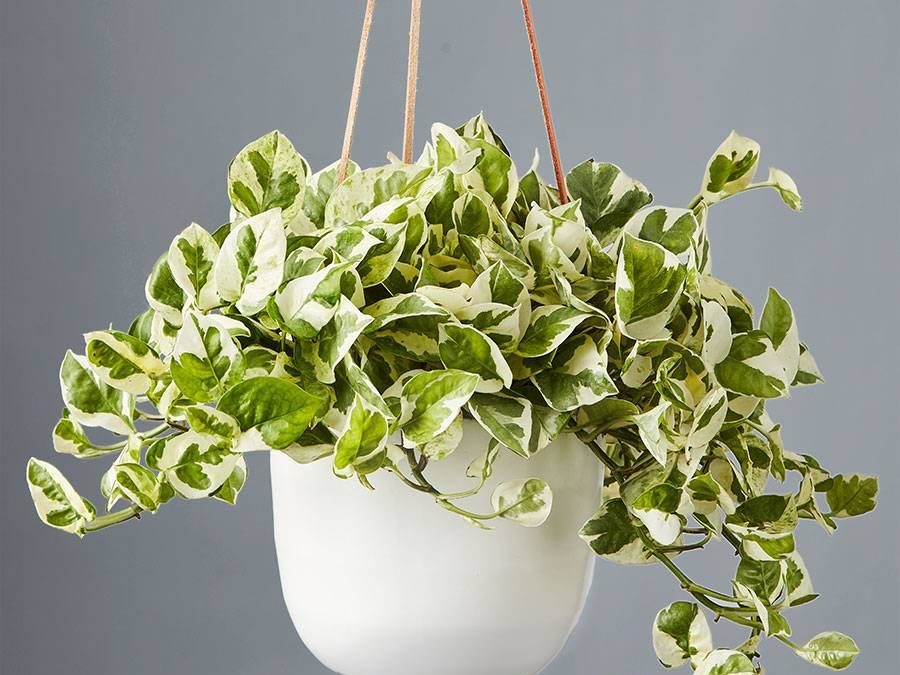
[…] Low light plants don’t need much […]
[…] you’re looking for some guidance on which low light plants are best for your home, then this comprehensive guide is for you. We’ll go over a variety of […]
[…] plants need bright, indirect light to thrive. If your space is very dark, choose a plant that is tolerant of low light, such as a snake […]
[…] It’s another excellent choice for a spiky houseplant in low-light conditions. The plant is a slow-growing evergreen tree that can reach up to fifteen feet tall. The dragon tree is native to Madagascar and is tolerant of a wide range of conditions, including low light. […]
[…] best plants for low light are the spider plant, the peace lily, the bamboo palm, and the […]
[…] If you’re looking for an air plant that can thrive in low light conditions, there are a few different options from which you can choose. Tillandsia cyanea, Tillandsia stricta, and Tillandsia caput-medusae are all good choices for areas with low light. […]
[…] a wide range of growing conditions. They prefer bright, indirect light but can also tolerate low light levels. Always water it when the soil is dry and fertilize monthly during the growing […]
[…] this article, we will introduce you to 16 low light plants that are perfect for brightening up your dark […]